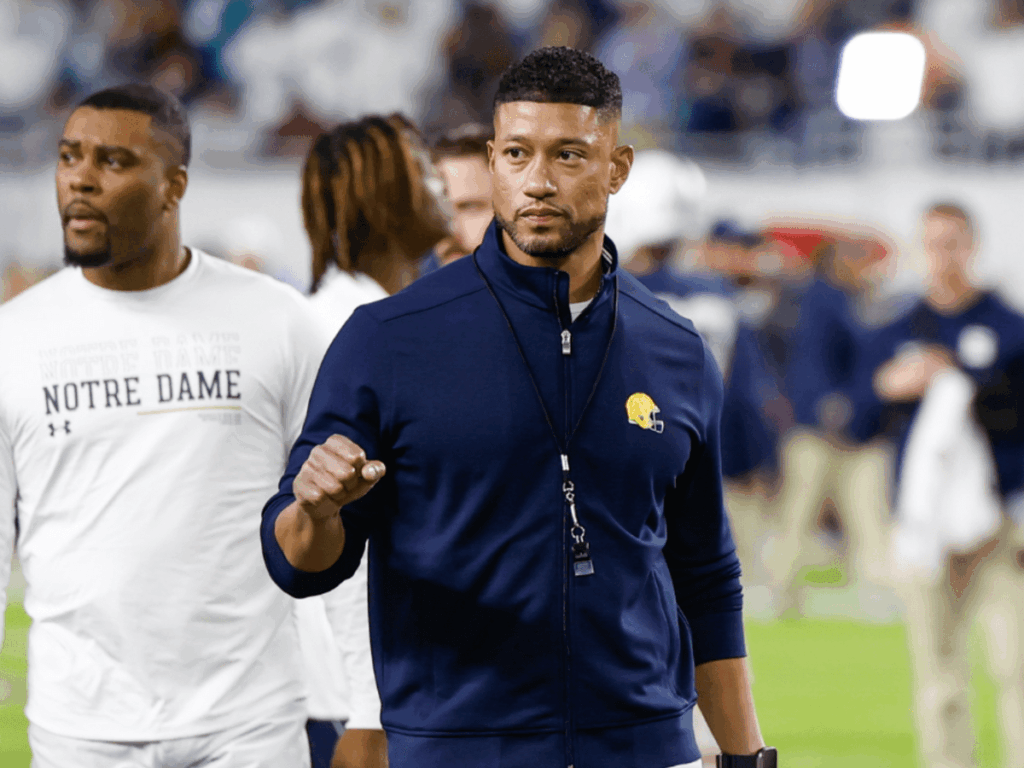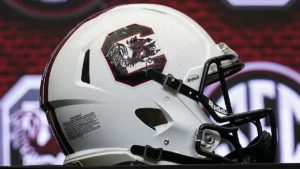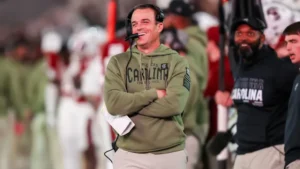
Freeman’s Focus Shifts: Notre Dame Turns Page on Spring Practice, Eyes Summer Growth
The echoes of cleats on turf have faded, the final whistle has blown, and the intensity of Notre Dame’s spring practice has receded into the annals of the offseason. For Head Coach Marcus Freeman, however, the conclusion of these vital weeks doesn’t signal a period of rest, but rather a strategic pivot. The book on spring is now firmly closed, its pages filled with observations, evaluations, and a clearer understanding of the Fighting Irish as they stand today. Now, Freeman’s gaze is fixed firmly on the horizon, on the crucial summer months that will shape the team’s trajectory heading into a highly anticipated 2025 season.
Spring practice serves as a crucible for any college football program, a period of intense evaluation and development. It’s a time for coaches to assess the progress of returning players, integrate newcomers, experiment with different schemes, and foster the chemistry that will be essential when the bright lights of game day return. For Notre Dame under Freeman, this spring was particularly significant. Coming off a season that showcased both promise and areas for growth, the coaching staff was keen to identify strengths to build upon and weaknesses to address.
One of the primary objectives of spring was undoubtedly the continued evolution of the offense under the guidance of Coordinator Mike Denbrock. With a talented quarterback room led by Riley Leonard, who arrived with significant expectations, the focus was on establishing a cohesive and dynamic attack. Leonard’s integration into the Notre Dame system was a key storyline throughout the spring. Coaches and teammates alike lauded his leadership, his arm talent, and his quick understanding of the offensive concepts. The spring provided invaluable repetitions for Leonard to build rapport with his receivers, tight ends, and running backs, forging the timing and trust necessary for a successful passing game.
Beyond the quarterback position, the spring offered opportunities for other offensive players to step into larger roles. The development of the receiving corps was closely watched, with several young players aiming to emerge as reliable targets. The running back room, always a point of emphasis at Notre Dame, saw competition and refinement as the coaching staff sought to identify a stable of backs capable of carrying the load. The offensive line, a unit that experienced some turnover, used the spring to solidify its communication and cohesion, crucial for both protecting the quarterback and establishing a strong running game.
Defensively, Coordinator Al Golden continued to mold a unit known for its physicality and playmaking ability. While the defense has been a consistent strength for the Irish, the spring provided a platform to identify new leaders and develop depth across all position groups. The defensive line, a traditional strength of Notre Dame, focused on maintaining its dominance and identifying the next wave of disruptive pass rushers. The linebacker corps, often the heart of the defense, saw players vying for playing time and embracing the responsibility of setting the tone. The secondary, which boasts a blend of experience and youthful talent, used the spring to refine its coverage techniques and communication, aiming to become even more formidable against opposing passing attacks.
Marcus Freeman’s leadership style, characterized by his energy, passion, and genuine connection with his players, was palpable throughout the spring. He was a constant presence on the practice field, offering encouragement, instruction, and a clear vision for the team’s identity. Freeman’s ability to foster a positive and competitive environment is seen as a key factor in the program’s growth, and the spring provided further evidence of his impact on the team’s culture.
The conclusion of spring practice also allows the coaching staff to delve deeper into film study and data analysis. The numerous practices and scrimmages provide a wealth of information that will be meticulously reviewed to identify trends, areas of concern, and individual player progress. This detailed evaluation will inform the coaching staff’s strategy for the summer months, guiding their approach to individual development plans and the overall team preparation.
As the calendar turns towards summer, the focus shifts from on-field drills to a more individualized approach. The strength and conditioning program takes center stage, as players work to enhance their physical attributes – their strength, speed, agility, and endurance. This period is crucial for building the physical foundation necessary to withstand the rigors of a demanding college football season.
Summer also provides opportunities for players to hone their skills through individual workouts and voluntary team activities. Quarterbacks will work on their throwing mechanics and timing with receivers. Defensive backs will refine their footwork and coverage techniques. Offensive and defensive linemen will focus on their technique and strength in the trenches. These player-driven activities, often facilitated by the coaching staff, are vital for continued development and fostering leadership within the team.
Recruiting remains a constant endeavor in college football, and the summer months are often a busy period for attracting top talent. While the coaching staff will have a better understanding of their current roster needs based on spring evaluations, they will continue to actively recruit players who can contribute to the program’s future success. Official visits for recruits often take place during the summer, providing an opportunity for prospective players to experience the Notre Dame environment firsthand.
Beyond the physical and tactical preparations, the summer also plays a crucial role in building team chemistry and leadership. With less formal practice time, players have more opportunities to connect on a personal level, fostering the bonds that can be so critical when facing adversity during the season. Leadership often emerges organically during these informal settings, as players take initiative and hold their teammates accountable.
Marcus Freeman and his coaching staff will undoubtedly utilize the summer to strategically plan for the upcoming season. They will analyze their schedule, identify key opponents, and begin to formulate game plans. The insights gained from spring practice will be invaluable in this process, allowing them to tailor their approach based on the strengths and weaknesses of their own team and their opponents.
The anticipation surrounding the 2025 Notre Dame football season is already building. With a talented roster, key additions through the transfer portal, and a coaching staff committed to excellence, the Fighting Irish are aiming for a season of significant achievement. The foundation laid during spring practice, coupled with the crucial work that will be done throughout the summer, will ultimately determine their success on the field.
For Marcus Freeman, the closing of the spring practice chapter is not an end, but rather a transition. The lessons learned, the progress made, and the areas identified for improvement will serve as the roadmap for the summer. His focus is now squarely on maximizing the potential of his team during these vital months, ensuring that when fall camp arrives, the Fighting Irish are prepared to embark on their quest for a memorable season. The book on spring is closed, but the story of the 2025 Notre Dame football team is just beginning to unfold, with the summer serving as a critical turning point in the narrative. The anticipation is palpable, and the Notre Dame faithful eagerly await the next chapter under Freeman’s leadership.





